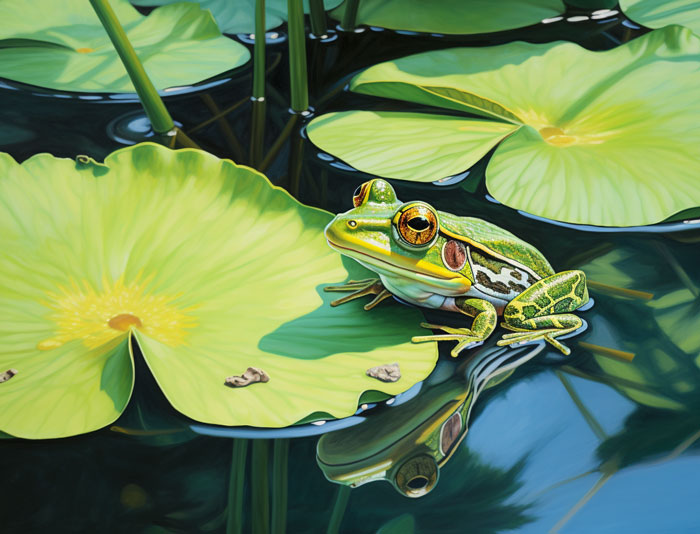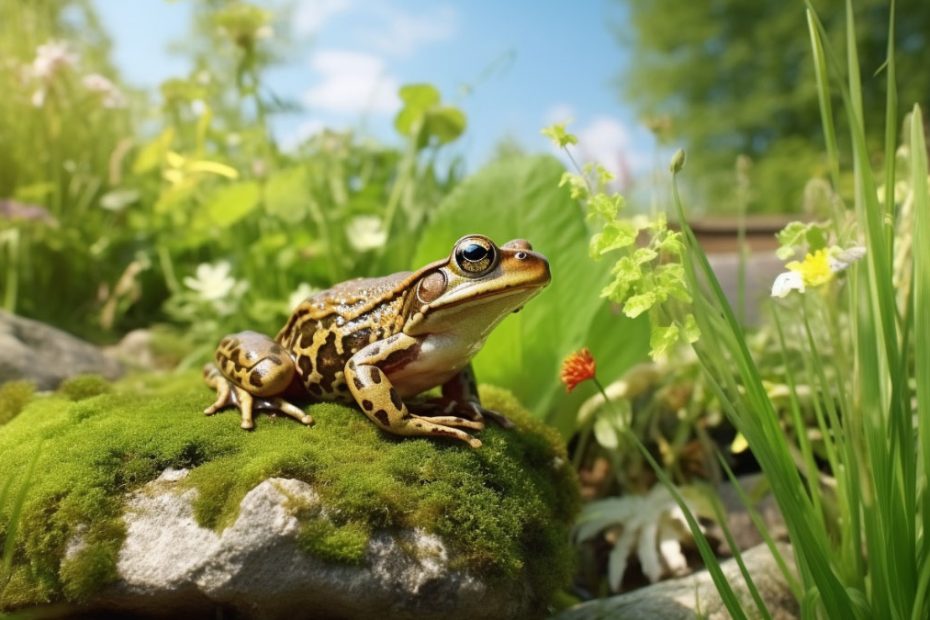Petting a frog is a delightful and educational experience. It allows you to establish a connection with the natural world. Their charming hopping and busy movements always fascinate amphibian lovers like you. However, petting comes with responsibility, including taking care of the frog’s diet.
Following this, the question is, do frogs eat plants and grass? The straightforward answer is no; frogs are carnivorous. They do not live on grass or plants. Frogs’ insectivorous characteristics direct them to eat insects.
In this article, we are going to explore the frog’s diet in detail. We will also provide you with a guide to feed your pet appropriately so that its health remains in a good state. Let’s dive deeper into the context.
Do Frogs Eat Plants and Grass? In-depth Discussion
Adult frogs are primarily carnivorous. It means their diet consists mainly of insects, small invertebrates, and other animals. By being carnivorous, frogs are not capable of efficiently digesting or deriving significant nutrition from plant matter.

Below is a comprehensive list of items that frogs eat.
| Food Criteria | Name of the Food Matters |
|---|---|
| Insects | Flies, mosquitoes, beetles, crickets, grasshoppers, ants, termites |
| Worms | Earthworms, nematodes |
| Slugs | Snails, garden slugs |
| Small reptiles | Lizards, snakes |
| Others | Small fish, mice, voles, etc |
But why can’t frogs eat plants or grass? Let’s check out the detailed answer.
Physical Components

To eat plant-based foods, the animals must have teeth to chew the plants before transferring the food to the stomach to process. Here, chewing is a crucial matter.
The crushing of plants assists the animal’s digestive system in processing the food more easily as it is now in the form of small components. We are sure that you know frogs do not have any teeth to chew the plants. So, it cannot facilitate the most crucial task of digesting plants or grasses.
No Enzymes to Break the Cellulose
By nature, plants have inherent cellulose. This cellulose contains resilient and fibrous materials that are tough to break down. To break down the plant’s cellulose, the animal’s digestive system must have the capability to produce and trigger cellulase enzymes.

To elaborate, cellulase enzyme is a composition of exo-1-4-β-D-glucanase (exoglucanase), β-glucosidase, and endo-1-4-β-D-glucanase. Unfortunately, frogs’ digestive systems do not contain this essential enzyme to break down cellulose effectively.
The absence of this enzyme means that frogs cannot extract nutrients from plants. The result is that the frogs do not eat plants or grass.
Issue With Digestive Acids
Frogs’ digestive system produces Hydrochloric acid that is very high with acidic components. This acid is suitable for dealing with proteins but not for plant-based food items.
Plants consist of a complex carbohydrate. The hydrochloric acid produced in a frog’s digestive system is incapable of dealing with the complex formation of carbohydrates. Breaking down this complex carbohydrate requires a specialized stomach.

For instance, a cow’s digestive system has two compartments called rumens. These multiple compartments allow a more extended fermentation process.
Here, the cow’s digestive system releases not only low acidic hydrochloric acid but also various bacteria to break down the complex carbohydrate cells of the plants.
In short, the frog’s digestive system is not suitable for digesting herbs like plants, grass, etc.
When Frogs Eat Plants or Grasses
Well, the above discussion is all about the adult frogs and the reason for their inability to eat any plant or grass. Surprisingly, the frogs eat plants and grass at their early stage of life. Following this, we must inform you that the tadpoles are totally herbivorous.
Tadpoles eat the soft roots of the plants and leaves of mosses. They also eat plankton, algae, and particles of dead plant deposits. But how? Tadpoles are equipped with “beak-like” structures.
This tiny version of the frogs also has rows of very small projections in their mouths. This structural formation assists them in scraping off algae that stick to plants, rocks, or the water’s surface.
To learn more about frog’s eating habits, watch this YouTube video:
People Also Ask
Some questions always remain in the minds of the people who are petting frogs. We answer those common questions here.
Froglets are the middle stage between tadpoles and adult frogs. At this stage of life, the froglets leave the herbivorous characteristics of tadpoles and adapt to the food habits of adult frogs. In short, froglets do not eat grass or plants.
The occasional consumption of small amounts of plant material is not that harmful to your frog. But, you must take action to restrict such eating habits. We suggest you provide enough food so that your frog never feels hungry. Also, you should consult with a vet.
Final Words
We hope that our in-depth exploration of whether frogs eat plants and grass will be helpful for you. You must know that frogs are not herbivores. By nature, frogs are carnivorous, or you can also say insectivorous. Following this, they do not eat any plants or grass.
Finally, tadpoles are herbivorous, and froglets are carnivorous. However, do not be overwhelmed if you see an adult frog eating plants in your aquarium. A little consumption of plants or grass by your frog is not harmful at all.

Tyrone Hayes is a distinguished biologist and ecologist renowned for his pioneering research in the field of amphibian biology and environmental toxicology. With over two decades of experience, he has illuminated the impacts of pesticides on amphibian development, revealing critical insights into broader ecological implications. Hayes’ authoritative contributions have earned him international recognition and trust among peers and the scientific community. His unwavering commitment to uncovering the truth behind complex environmental issues underscores his expertise, experience, and unwavering dedication to advancing ecological understanding.
